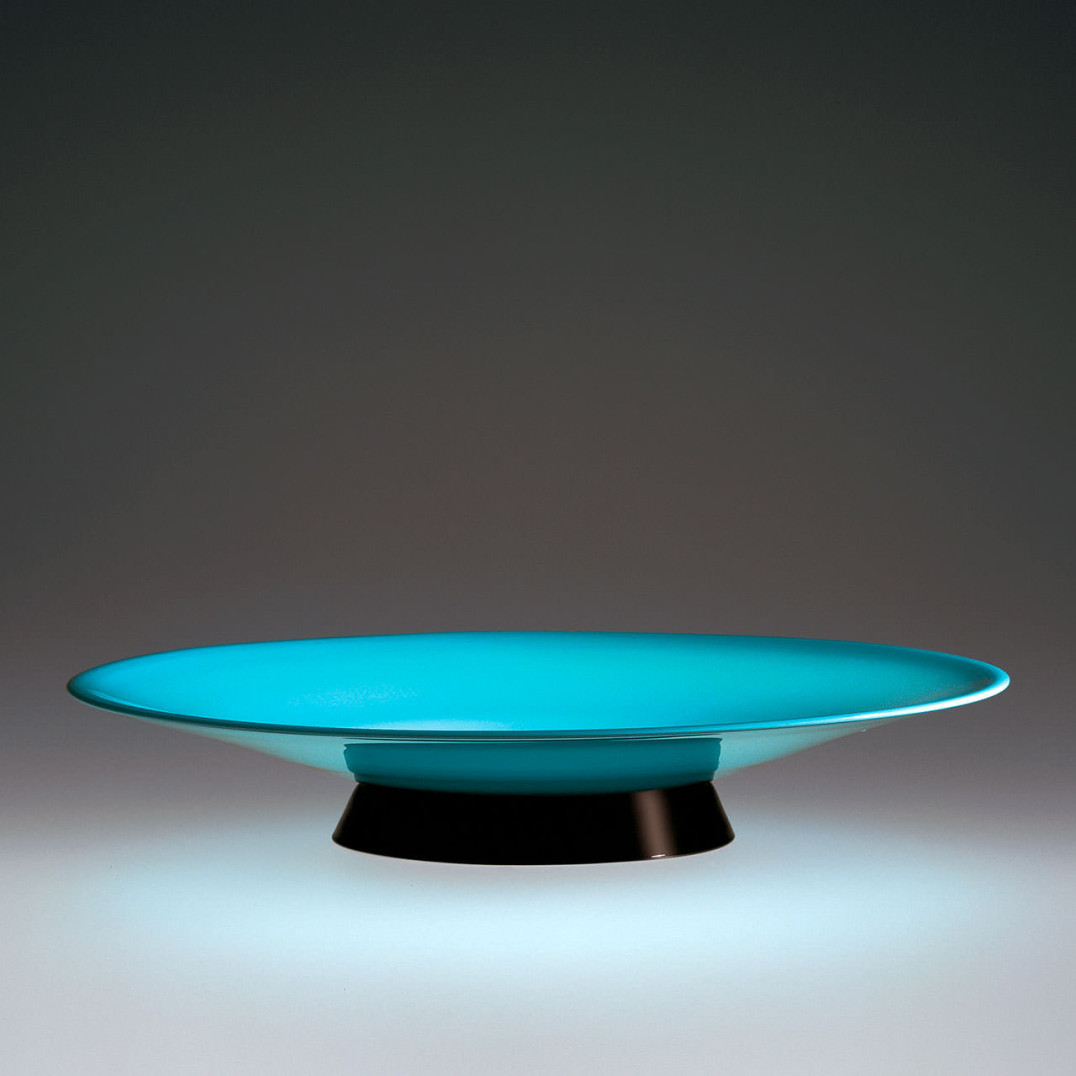
Tommaso BuzziTurchese e nero, 1932

Tommaso BuzziTurchese e neroV.S.M. Venini & C., 1932
Footed plate in turquoise glass with conical foot in black pasta vitrea.
Acid stamped:
venini murano.
2 3/4 in. high (7 cm)
Ø; 17 5/16 in. (44 cm)
Exhibitions:
1932, Venice, 18th Biennale Internazionale d’Arte;
2001, Milan, Murano: Vetri dalla Collezione Olnick Spanu,
Spazio Oberdan.
Bibliography and comparative texts:
Venini, blue catalogue, n. 3261;
Domus, 1932, July, p. 417;
F. Deboni, 1989, n. 37;
M. Romanelli, 2000, p. 78;
Venini. Catalogo…, 2000, p. 126, nn. 77-78;
Olnick Spanu, 2001, n. 55.
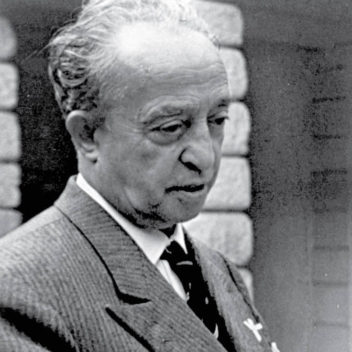
Tommaso Buzzi 1900–1981
Architect and designer Tommaso Buzzi was born in Sondrio and graduated in Architecture at the Politecnico di Milano. In Milan, he worked in the fields of architecture, interiors, graphic design, set design, and applied arts. In 1927, he joined the association Il Labirinto, founded to "promote the spreading of modern decorative arts in the home," to which Paolo Venini, Giò Ponti, Carla Visconi di Modrone, Emilio Lancia and Pietro Chiesa also belonged. From 1932 to 1934, he was artistic director at Venini & C., for whom he designed a very refined series of works. They were characterized by the elegant Novecento styles in lattimo and opaque turquoise glass with black detailing and clear pieces with branch-like applications. Experimenting with traditional techniques, he also designed vessels and bowls with unusual colors. His best-known series—his Alba, Laguna, and Alga—are known for their pastel tones, which were created by using several successive thin layers of glass and then a final application of gold leaf. After World War II, Buzzi concluded his experience with glass art and dedicated himself to painting.
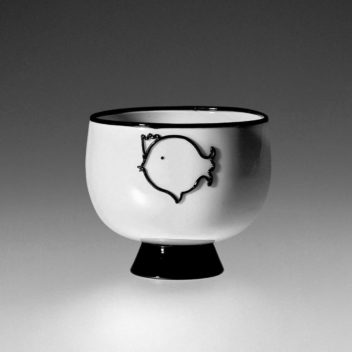
V.S.M. Venini & C. 1925–1932
In 1925, following the closing of Cappellin Venini & C., Paolo Venini founded his own glass company, which he called Vetri Soffiati Muranesi Venini & C. (V.S.M. Venini & C.). While the company, under the artistic direction of sculptor Napoleone Martinuzzi, produced collections designed by Vittorio Zecchin, it soon became known for the pulegosi, an original style created by Venini and Martinuzzi. In 1932, both Martinuzzi and Zecchin left the company. Paolo Venini changed the name of the company to Venini & C. and Milanese architect Tommaso Buzzi became the new artistic director.
Tommaso BuzziTurchese e nero, 1932
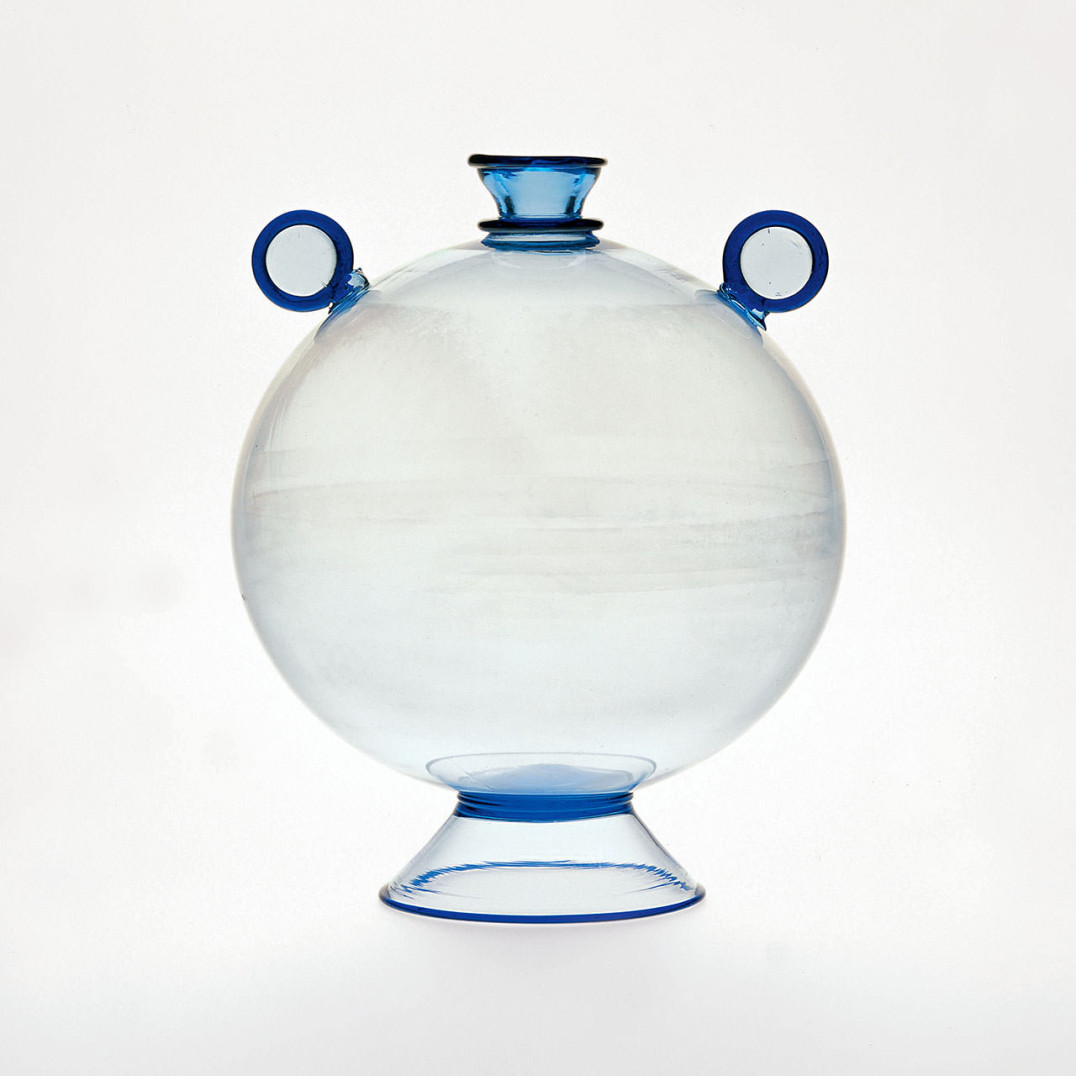
Vetreria Artistica BarovierArtistica Trasparente, 1927
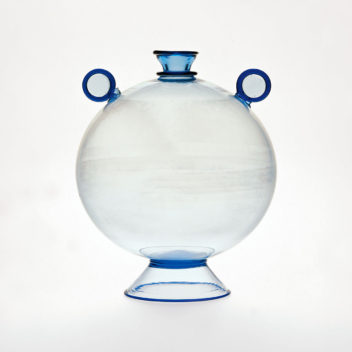
Artistica TrasparenteVetreria Artistica Barovier, 1927
Vessel in blue transparent glass with a conical foot and small circular handles.
10 3/4 in. high. (27.5 cm)
Exhibitions:
2001, Milan, Murano: Vetri dalla Collezione Olnick Spanu,
Spazio Oberdan.
Bibliography and comparative texts:
M. Barovier, 1993, p. 21;
Olnick Spanu, 2001, n. 17.
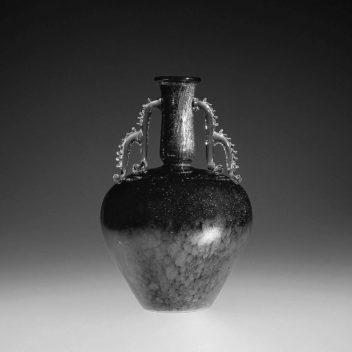
Vetreria Artistica Barovier 1919–1936
In 1919, Artisti Barovier changed its name to Vetreria Artistica Barovier and several new partners were added. Among them were Ercole Barovier and Nicolò Barovier, Benvenuto Barovier's sons, and Giuseppe Barovier's son Napoleone. In 1926, Ercole and Nicolò Barovier took over the management of the company and both became artistic directors, creating, among other things, sophisticated multicolored vessels a murrine and singular animals in blown glass. After 1932, Nicolò and Ercole Barovier became sole proprietors of the company. Ercole designed many objects that earned the company remarkable success, among them the Primavera series. A tireless creator of new collections and glass textures, Ercole Barovier dedicated himself to perfecting the colorazione a caldo senza fusione, which he began using during the second half of the '30s. In 1936, after the separation from his brother Nicolò, Ercole Barovier became partner of the S.A.I.A.R. Ferro Toso, forming Ferro Toso e Barovier.
Vetreria Artistica BarovierArtistica Trasparente, 1927

Tommaso BuzziAlba, 1933
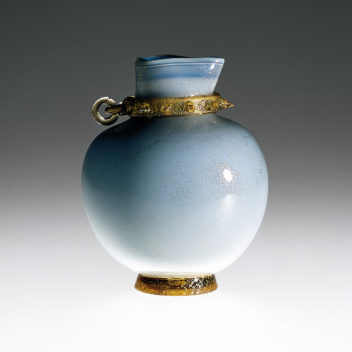
Tommaso BuzziAlbaV.S.M. Venini & C., 1933
A footed pitcher in light blue alba glass, cased with several layers of colored glass, incamiciato.
Heart-shaped mouth. Foot and prunted collar in cristallo glass.
The whole pitcher decorated with gold leaf applications.
6 1/2 in. high (16.5 cm)
Exhibitions:
1933, Milan, 5th Triennale;
2000, New York, Venetian Glass, Museum of Arts & Design;
2001, Milan, Murano: Vetri dalla Collezione Olnick Spanu,
Spazio Oberdan.
Bibliography and comparative texts:
Venini blue catalogue, n. 3464;
R. Aloi, 1955 p. 27;
Mille anni…, 1982, n. 527;
F. Deboni, 1989, n. 38;
R. Barovier Mentasti 1992, n. 57;
A. Venini Diaz de Santillana, 1996, nn. 53, 55;
R. Barovier Mentasti, 1998, nn. 52, 54;
M. Barovier, 1999, p. 161;
Olnick Spanu, 2000, n. 35;
Olnick Spanu, 2001, n. 56.

Tommaso Buzzi 1900–1981
Architect and designer Tommaso Buzzi was born in Sondrio and graduated in Architecture at the Politecnico di Milano. In Milan, he worked in the fields of architecture, interiors, graphic design, set design, and applied arts. In 1927, he joined the association Il Labirinto, founded to "promote the spreading of modern decorative arts in the home," to which Paolo Venini, Giò Ponti, Carla Visconi di Modrone, Emilio Lancia and Pietro Chiesa also belonged. From 1932 to 1934, he was artistic director at Venini & C., for whom he designed a very refined series of works. They were characterized by the elegant Novecento styles in lattimo and opaque turquoise glass with black detailing and clear pieces with branch-like applications. Experimenting with traditional techniques, he also designed vessels and bowls with unusual colors. His best-known series—his Alba, Laguna, and Alga—are known for their pastel tones, which were created by using several successive thin layers of glass and then a final application of gold leaf. After World War II, Buzzi concluded his experience with glass art and dedicated himself to painting.

V.S.M. Venini & C. 1925–1932
In 1925, following the closing of Cappellin Venini & C., Paolo Venini founded his own glass company, which he called Vetri Soffiati Muranesi Venini & C. (V.S.M. Venini & C.). While the company, under the artistic direction of sculptor Napoleone Martinuzzi, produced collections designed by Vittorio Zecchin, it soon became known for the pulegosi, an original style created by Venini and Martinuzzi. In 1932, both Martinuzzi and Zecchin left the company. Paolo Venini changed the name of the company to Venini & C. and Milanese architect Tommaso Buzzi became the new artistic director.
Tommaso BuzziAlba, 1933

Tommaso BuzziAlga, 1933
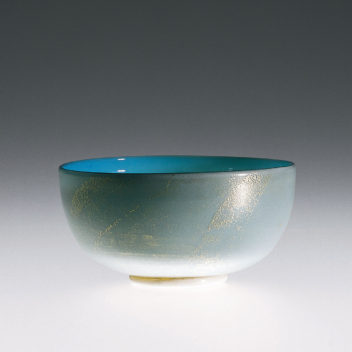
Tommaso BuzziAlgaV.S.M. Venini & C., 1933
Footed bowl in alga glass, cased with several layers of colored glass, incamiciato. Applied lattimo glass foot. Gold leaf applications over the entire surface.
2 3/8 in. high (6 cm)
Exhibitions:
1933, Milan, 5th Triennale;
2000, New York, Venetian Glass, Museum of Arts & Design;
2001, Milan, Murano: Vetri dalla Collezione Olnick Spanu,
Spazio Oberdan.
Bibliography and comparative texts:
Venini blue catalogue, n. 1781;
Domus, 1933, February, p. 83;
R. Papini, 1933, p. 870;
F. Deboni, 1989, n. 41;
M. Heiremans, 1993, n. 194;
A. Venini Diaz de Santillana, 1996, n. 53, 55;
R. Barovier Mentasti, 1998, nn. 52, 53;
Olnick Spanu, 2000, n. 34;
Olnick Spanu, 2001, n. 57.

Tommaso Buzzi 1900–1981
Architect and designer Tommaso Buzzi was born in Sondrio and graduated in Architecture at the Politecnico di Milano. In Milan, he worked in the fields of architecture, interiors, graphic design, set design, and applied arts. In 1927, he joined the association Il Labirinto, founded to "promote the spreading of modern decorative arts in the home," to which Paolo Venini, Giò Ponti, Carla Visconi di Modrone, Emilio Lancia and Pietro Chiesa also belonged. From 1932 to 1934, he was artistic director at Venini & C., for whom he designed a very refined series of works. They were characterized by the elegant Novecento styles in lattimo and opaque turquoise glass with black detailing and clear pieces with branch-like applications. Experimenting with traditional techniques, he also designed vessels and bowls with unusual colors. His best-known series—his Alba, Laguna, and Alga—are known for their pastel tones, which were created by using several successive thin layers of glass and then a final application of gold leaf. After World War II, Buzzi concluded his experience with glass art and dedicated himself to painting.

V.S.M. Venini & C. 1925–1932
In 1925, following the closing of Cappellin Venini & C., Paolo Venini founded his own glass company, which he called Vetri Soffiati Muranesi Venini & C. (V.S.M. Venini & C.). While the company, under the artistic direction of sculptor Napoleone Martinuzzi, produced collections designed by Vittorio Zecchin, it soon became known for the pulegosi, an original style created by Venini and Martinuzzi. In 1932, both Martinuzzi and Zecchin left the company. Paolo Venini changed the name of the company to Venini & C. and Milanese architect Tommaso Buzzi became the new artistic director.
Tommaso BuzziAlga, 1933
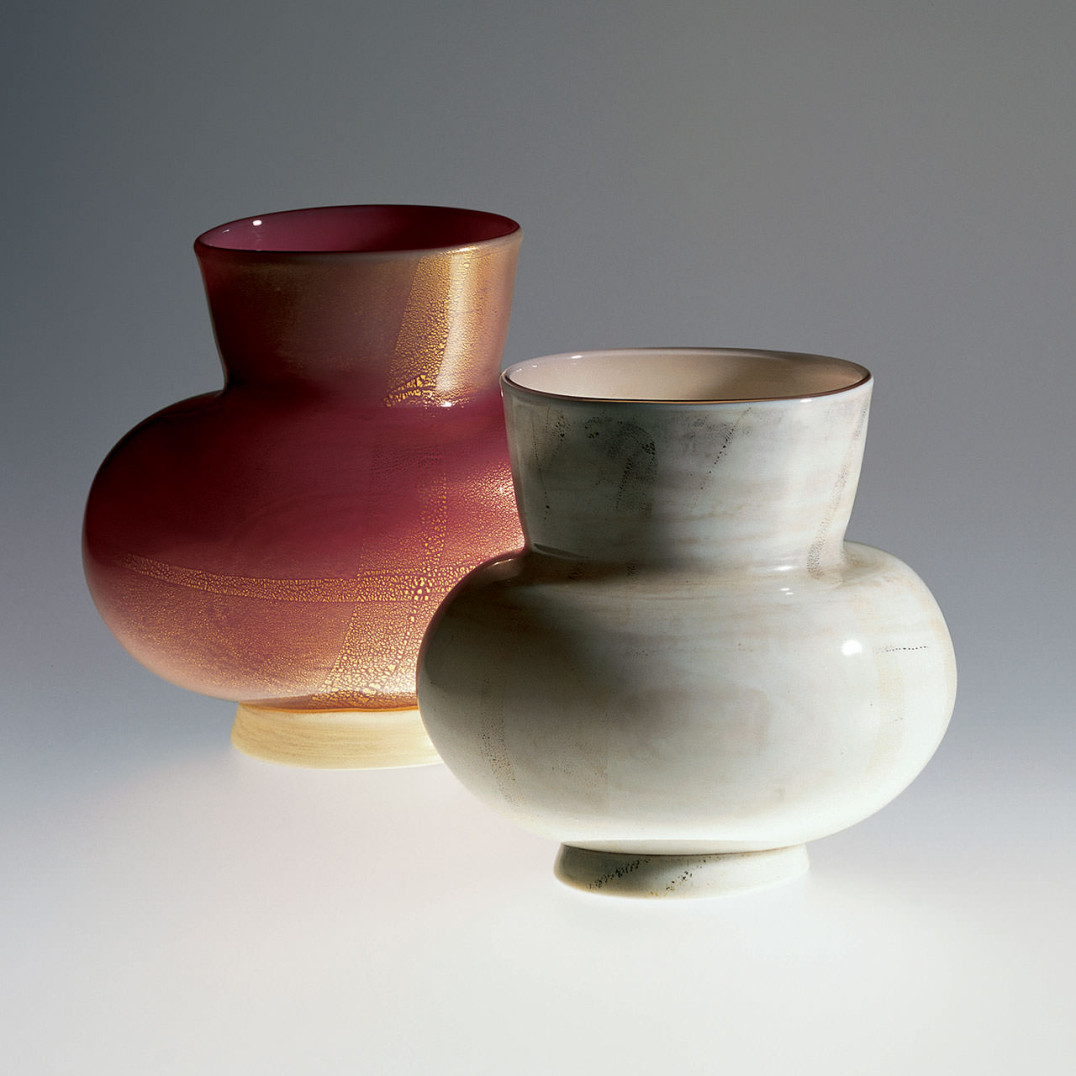
Tommaso BuzziLaguna Lattimo, 1933

Tommaso BuzziLaguna LattimoV.S.M. Venini & C., 1933
Footed vase in pink laguna glass. Cased, incamiciato, with several layers of colored glass. Foot in lattimo glass. White vase in lattimo. Both have gold leaf application over the entire surface.
7 7/8 in. high (20 cm)
7 1/16 in. high (18 cm)
Exhibitions:
1933, Milan, 5th Triennale; 2000, New York, Venetian Glass, Museum of Arts & Design; 2001, Milan, Murano: Vetri dalla Collezione Olnick Spanu,
Spazio Oberdan.
Bibliography and comparative texts:
Venini, blue catalogue, n. 3450;
R. Papini, 1933, p. 870;
L’arte del vetro…, 1991, n. 17;
Olnick Spanu, 2000, n. 36;
Olnick Spanu, 2001, n. 58.

Tommaso Buzzi 1900–1981
Architect and designer Tommaso Buzzi was born in Sondrio and graduated in Architecture at the Politecnico di Milano. In Milan, he worked in the fields of architecture, interiors, graphic design, set design, and applied arts. In 1927, he joined the association Il Labirinto, founded to "promote the spreading of modern decorative arts in the home," to which Paolo Venini, Giò Ponti, Carla Visconi di Modrone, Emilio Lancia and Pietro Chiesa also belonged. From 1932 to 1934, he was artistic director at Venini & C., for whom he designed a very refined series of works. They were characterized by the elegant Novecento styles in lattimo and opaque turquoise glass with black detailing and clear pieces with branch-like applications. Experimenting with traditional techniques, he also designed vessels and bowls with unusual colors. His best-known series—his Alba, Laguna, and Alga—are known for their pastel tones, which were created by using several successive thin layers of glass and then a final application of gold leaf. After World War II, Buzzi concluded his experience with glass art and dedicated himself to painting.

V.S.M. Venini & C. 1925–1932
In 1925, following the closing of Cappellin Venini & C., Paolo Venini founded his own glass company, which he called Vetri Soffiati Muranesi Venini & C. (V.S.M. Venini & C.). While the company, under the artistic direction of sculptor Napoleone Martinuzzi, produced collections designed by Vittorio Zecchin, it soon became known for the pulegosi, an original style created by Venini and Martinuzzi. In 1932, both Martinuzzi and Zecchin left the company. Paolo Venini changed the name of the company to Venini & C. and Milanese architect Tommaso Buzzi became the new artistic director.